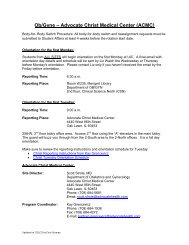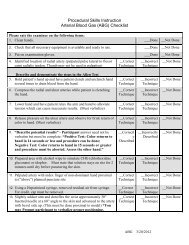a PDF version of the Full Hematology Oncology Curriculum
a PDF version of the Full Hematology Oncology Curriculum
a PDF version of the Full Hematology Oncology Curriculum
You also want an ePaper? Increase the reach of your titles
YUMPU automatically turns print PDFs into web optimized ePapers that Google loves.
Skills<br />
Fellows in <strong>the</strong> second and third year <strong>of</strong> <strong>the</strong>ir fellowship must perfect <strong>the</strong>ir skills. The most important<br />
may be for <strong>the</strong> senior fellow to function as a junior attending in many ways. They manage <strong>the</strong><br />
consultation team in a more independent manner, although still under <strong>the</strong> supervision <strong>of</strong> <strong>the</strong> attending<br />
on service. They should be capable <strong>of</strong> providing reasonable diagnostic and <strong>the</strong>rapeutic plans in most<br />
consultations except in <strong>the</strong> most complex cases.<br />
Areas <strong>of</strong> Knowledge<br />
Fellows will learn about many <strong>of</strong> <strong>the</strong>se areas <strong>of</strong> knowledge in hematology during <strong>the</strong> three‐year<br />
fellowship, but will need to supplement <strong>the</strong>ir knowledge by reading about areas <strong>of</strong> knowledge not<br />
addressed during <strong>the</strong> training. Fellows review this list to identify any gap in <strong>the</strong>ir knowledge. Although<br />
<strong>the</strong> focus <strong>of</strong> this rotation is upon malignant hematology and stem cell transplant many areas relevant to<br />
benign hematology and solid tumor oncology may also be emphasized.<br />
II. Basic Principles<br />
7. Basic Laboratory Concepts and Techniques<br />
g. Role <strong>of</strong> DNA, RNA and proteins in normal cellular processes<br />
h. Concepts <strong>of</strong> translation and transcription in normal cellular processes<br />
8. Pharmacology<br />
d. Pharmacokinetics, mechanism <strong>of</strong> action, metabolism, route <strong>of</strong> administration, indications,<br />
dosages, and toxicities <strong>of</strong> pharmacologic and biologic agents.<br />
e. Current experimental <strong>the</strong>rapeutics, such as monoclonal antibodies, radioimmuno<strong>the</strong>rapy, etc.<br />
f. Working knowledge <strong>of</strong> <strong>the</strong> mechanism <strong>of</strong> new drug development and approval process.<br />
9. Clinical Laboratory Techniques<br />
aa. Automated complete blood count with white blood cell differential<br />
bb. Hemoglobin electrophoresis<br />
cc. Reticulocyte count<br />
dd. Osmotic fragility<br />
ee. Red blood cell (RBC) enzyme assays<br />
ff. Specific techniques for microscopic identification <strong>of</strong> RBC parasites<br />
gg. High pressure liquid chromatography (HPLC)<br />
hh. Flow cytometry <strong>of</strong> peripheral blood, bone marrow, body fluids, lymph nodes and o<strong>the</strong>r tissues<br />
ii. Cytogenetics, including fluorescence in‐situ hybridization (FISH)<br />
jj. Prothrombin time and activated partial thromboplastin time<br />
kk. Coagulation factor and inhibitor assays<br />
ll. Bleeding time<br />
mm. Platelet function studies<br />
nn. Heparin induced thrombocytopenia (HIT) assays<br />
oo. Tissue (e.g. HLA) typing<br />
pp. Sou<strong>the</strong>rn blot<br />
qq. Polymerase chain reaction (PCR)<br />
rr. Reverse transcriptase – PCR (RT‐PCR)<br />
ss. Serum and urine protein electrophoreses and immunoelectrophoreses and/or immun<strong>of</strong>ixation<br />
34



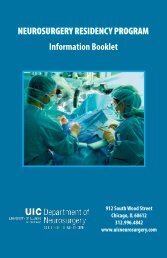
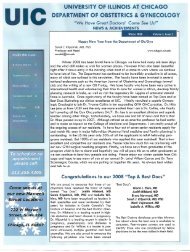
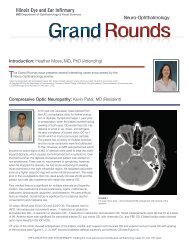
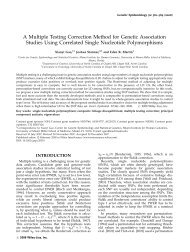
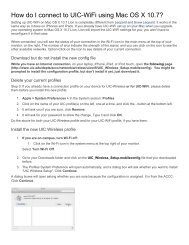
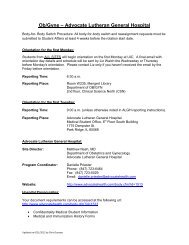

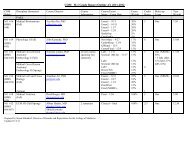

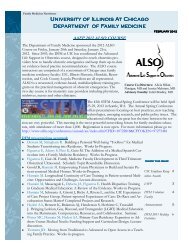
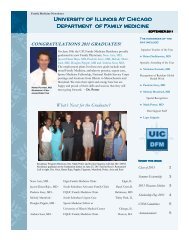
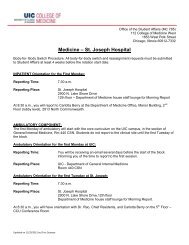
![CV Joan [W51] - University of Illinois College of Medicine at Chicago ...](https://img.yumpu.com/17336863/1/190x245/cv-joan-w51-university-of-illinois-college-of-medicine-at-chicago-.jpg?quality=85)
